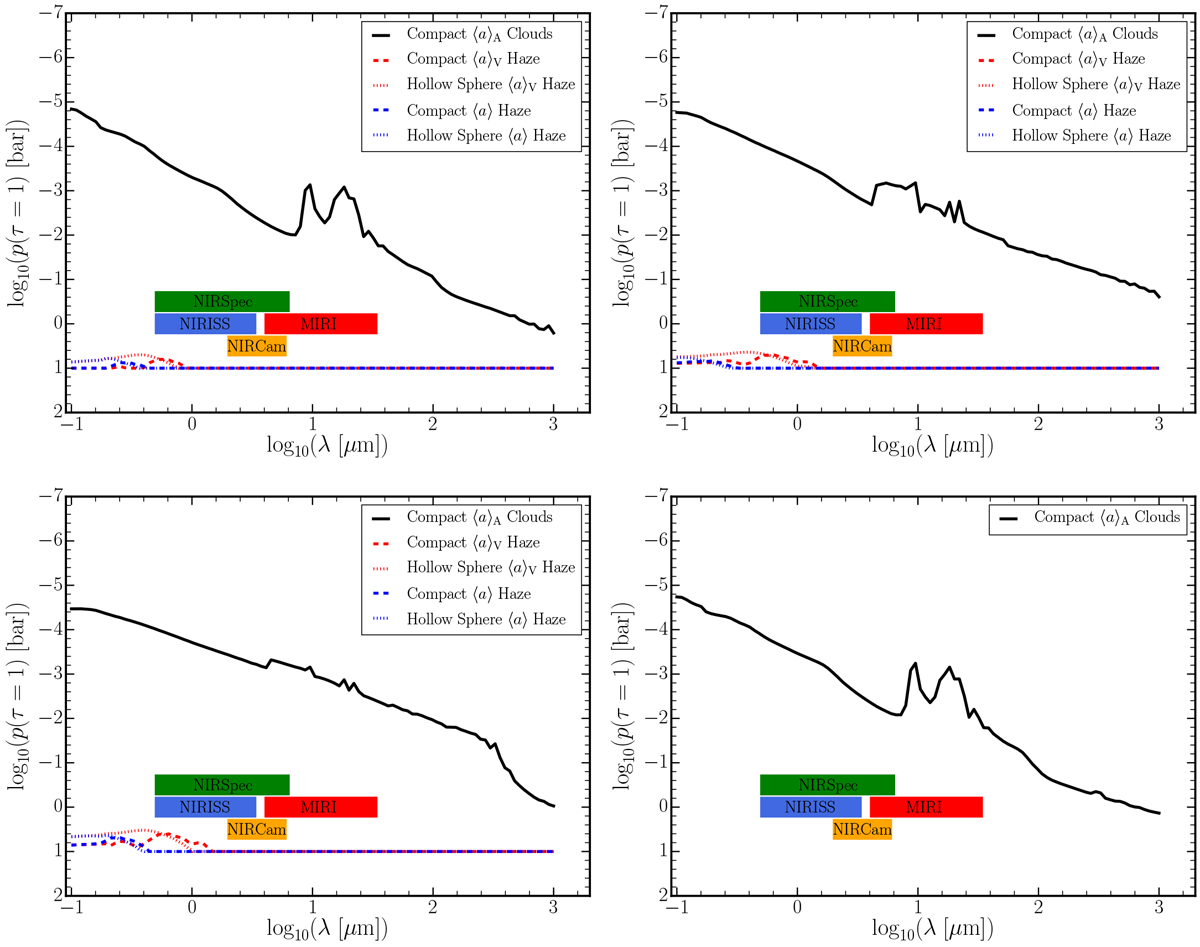Fig. 15

Atmospheric gas pressure, pgas [bar], at which the wavelength-dependent vertical optical depth, τ(λ), of the mineral cloud particles (solid black lines) and the hydrocarbon haze particles (red and blue, dashed and dotted lines) reaches unity. Four equatorial profiles are considered: the morning terminator (ϕ = 270°, top left), the evening terminator (ϕ = 90°, top right), the substellar point (ϕ = 0°, bottom left), the anti-stellar point (ϕ = 180°, bottom right); similar to Figs. 7 and 11. The hydrocarbon hazes are considered to have a tholin opacity (Fig. 16) for compact particles and a distribution of hollow spheres for two averages of particle size. The mineral cloud particles (solid black line) reach τ(λ) = 1 already at relatively low pressure in the optical but at pgas ≈ 1 bar for longer wavelengths, hence, WASP-43b’s atmosphere is more transparent in the far-IR. The hydrocarbon hazes remain optically thin. The coloured bars show wavelength ranges covered by the four JWST instruments, based on modes suggested for transmission spectroscopy of exoplanets (Stevenson et al. 2016): MIRI (red) – based on Medium Resolution Spectroscopy modes, NIRCAM (orange) – based on Grism Time Series mode, NIRSPEC (green) – based on Fixed Slit Spectroscopy mode available filters, NIRISS (blue) – based on Single Object Slitless Spectroscopy mode.
Current usage metrics show cumulative count of Article Views (full-text article views including HTML views, PDF and ePub downloads, according to the available data) and Abstracts Views on Vision4Press platform.
Data correspond to usage on the plateform after 2015. The current usage metrics is available 48-96 hours after online publication and is updated daily on week days.
Initial download of the metrics may take a while.


